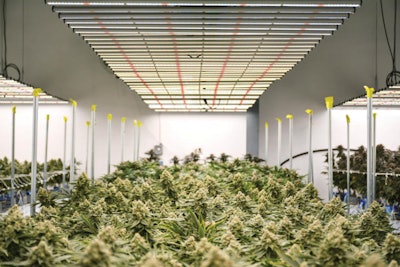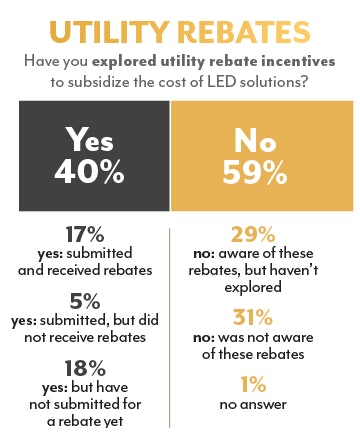
Last year, Colorado-based LivWell Enlightened Health received the “Xcel Energy 2016 Lighting Efficiency Achievement Award” for achieving the highest energy savings in a single lighting project within the state.
LivWell integrated LED fixtures into its Colorado cultivation facility with multi-tiered grow racks, saving itself nearly 3 million kilowatt hours (kWh) in a one-year period. The savings reported is “equivalent to roughly the same amount of electricity used to power 176 homes,” according to a press release issued by the company.
In addition to the accolade, LivWell was also granted a $50,000 energy rebate for the LED installations from Xcel Energy—a multi-state utility provider that’s been working with the cannabis industry to help cultivation facilities reduce their overall footprint through incentivized programs.
In this energy-dependent market, commercial cultivators like LivWell across the country are finding that rebates are easing the decision to invest in systems that may be more sustainable over time.
“Our top priority is to produce clean, consistent, high-quality, high-yielding cannabis. At the same time, we’re always looking at ways to do so more cost-effectively and sustainably,” says Mike Lord, director of business development at LivWell Enlightened Health.
Securing a Rebate
Not all utilities will provide energy-efficiency rebates to cannabis producers for making technology upgrades in their facilities. Additionally, for those utilities that do offer energy-efficiency incentives, there is no consistency when it comes to how they distribute energy rebates. However, there are some general guidelines cultivators can follow to set themselves up for a better chance of success, says John Morris, vice president of market development at an energy-efficiency consulting firm D+R International.

Morris says that if your sights are set on a rebate, the first step is to be confident in the technology you’re planning to switch to or install in your new facility—meaning, you’ve tested it and know that it is not going to create a negative impact on yield or quality. But it’s important to remember not to make the purchase until you’ve approached your utility provider.
“The very nature of an incentive is [that] the dollars are what pushed you to make that more efficient lighting choice,” he says. “It’s really important to make that distinction for cannabis producers that are operating within a utility service territory offering energy-efficiency incentives. Utilities are only able to provide incentive funds to growers who weren’t going to necessarily make that lighting upgrade choice without the utility dollars to incentivize them.”
Then, cannabis facility owners can either work with the utility company directly, or a trade ally—which is a company that can work with your team to develop a custom energy solution to present to the utility provider.
Cannabis facility owners should also be aware that if their utility receives its power from a federal agency such as the Bonneville Power Administration, which covers utilities in legalized recreational states including Washington, Oregon and parts of Northern California, a cannabis energy-efficiency incentive may be out of the question. Some public utilities on the BPA system will “self-fund” energy-efficiency projects for cannabis operators.
Utility Power & Distribution Capabilities
Cultivators must choose a location that is going to meet their facilities’ energy needs. If a cannabis facility operator has selected a location that is too off-the-grid, it may not be able to acquire the electricity that it needs right away.
“I’ve seen scenarios where people purchase these idyllic farmlands where they’re going to grow this amazing cannabis, and then they realize there’s no power access—it’s 30 poles away,” Morris says. “So it’s important for growers, if you haven’t selected a parcel or property yet, [to] do some outreach and research on the utility that’s going to be providing you power before you even think about purchasing,” as it could even be a situation in which a side of a street of a proposed facility can make all the difference.
As the industry matures, more data from energy usage will be gathered and analyzed, which will provide a better baseline for utility providers to understand the industry and issue rebates. In the meantime, Morris praises the business owners participating in these programs. “I give a lot of credit to the growers that are willing to experiment,” he says, not just for the goal of saving costs, but to take a step toward a more sustainable approach to cannabis cultivation.














